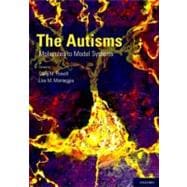
Note: Supplemental materials are not guaranteed with Rental or Used book purchases.
Purchase Benefits
What is included with this book?
| Introduction | |
| Autism and Autism Spectrum Disorders: Clinical Overview | |
| Neuroimaging in Autism Spectrum Disorders Human Imaging | |
| An overview of the genetics of autism spectrum disorders | |
| Rett syndrome: On Clinical and Genetic Features, and Experimental Models based on Mecp2 dysfunction | |
| Mecp2 Knockout in mouse models of Rett syndrome | |
| Putting into perspective the use of the Fmr1 KO mouse as a model for autism spectrum disorder | |
| Molecular functions of the mammalian fragile X mental retardation protein: Insights into mental retardation and synaptic plasticity | |
| Tuberous Sclerosis and Autism | |
| PTEN and autism with macrocephaly | |
| SHANK gene family and autism | |
| Smith-Lemli-Opitz Syndrome and Role of Cholesterol in Autism | |
| Angelman Syndrome | |
| Neuroligins and neurexins: Bridging the synaptic cleft in autism | |
| Alterations of the serotonin-melatonin pathway in autism spectrum disorders: Biological evidence and clinical consequences | |
| CNTNAP2 and autism spectrum disorders | |
| Chromosome 15q | |
| Q | |
| Aneusomies and Autism Spectrum Disorders | |
| Oxytocin and vasopressin: Mechanisms for potential sex differences observed in ASD | |
| FOXP2: Linking language and autism | |
| Table of Contents provided by Publisher. All Rights Reserved. |
The New copy of this book will include any supplemental materials advertised. Please check the title of the book to determine if it should include any access cards, study guides, lab manuals, CDs, etc.
The Used, Rental and eBook copies of this book are not guaranteed to include any supplemental materials. Typically, only the book itself is included. This is true even if the title states it includes any access cards, study guides, lab manuals, CDs, etc.